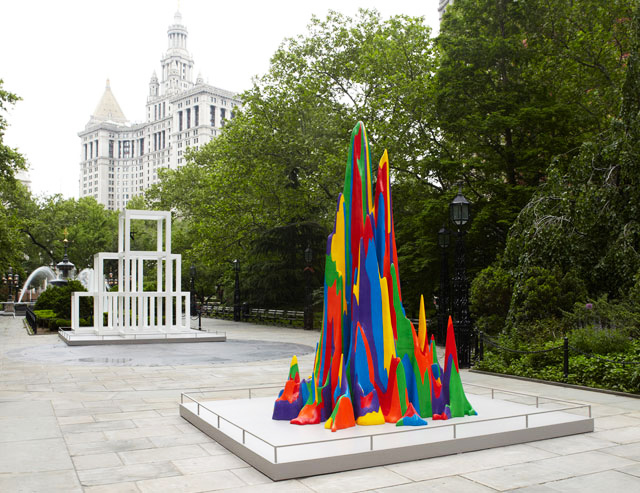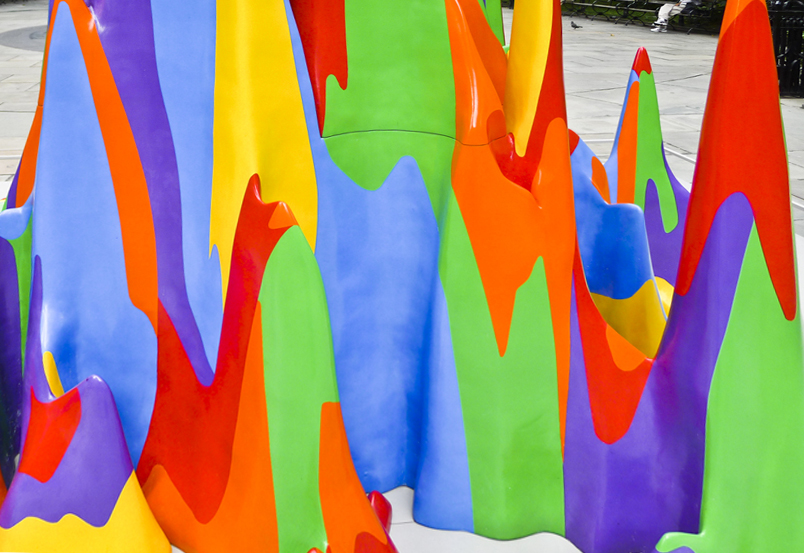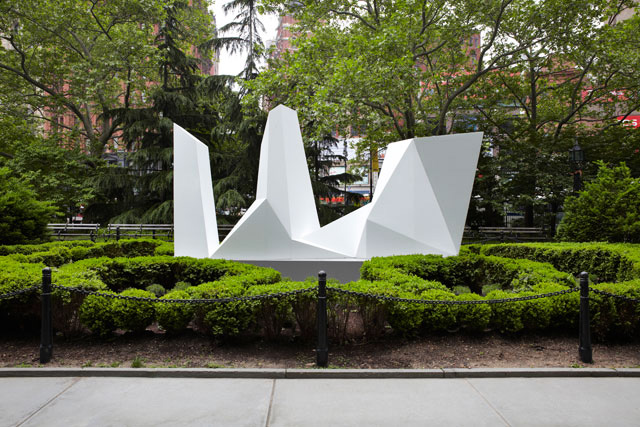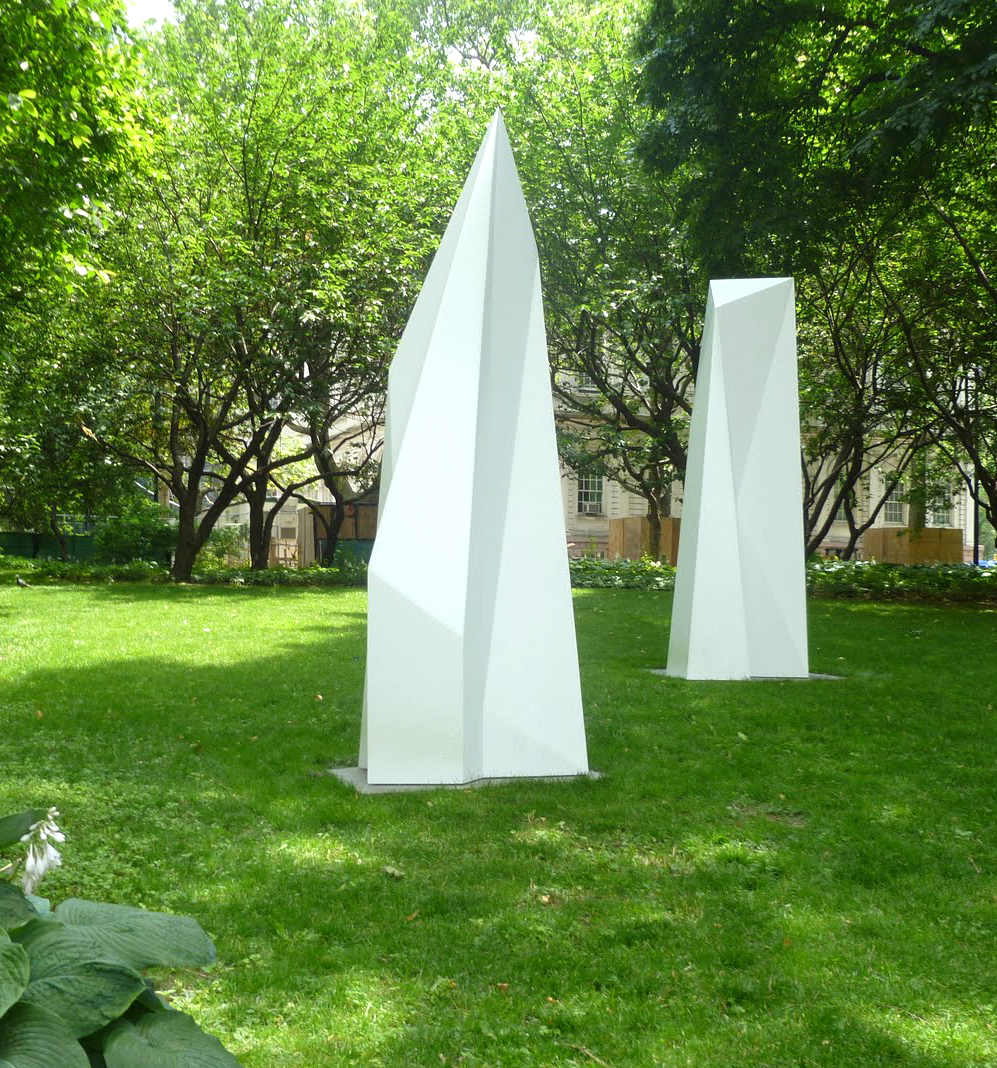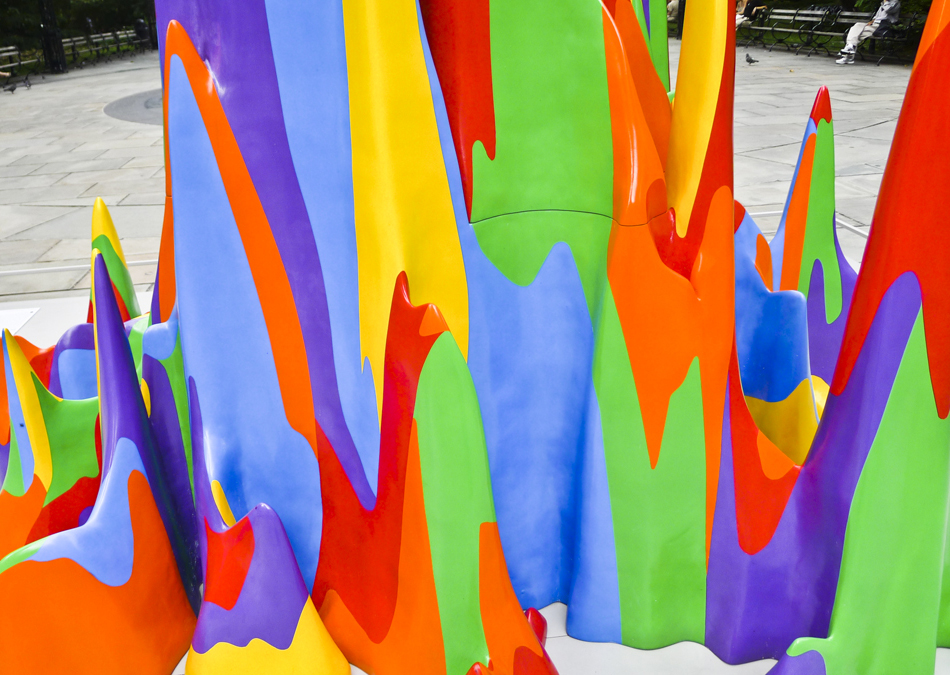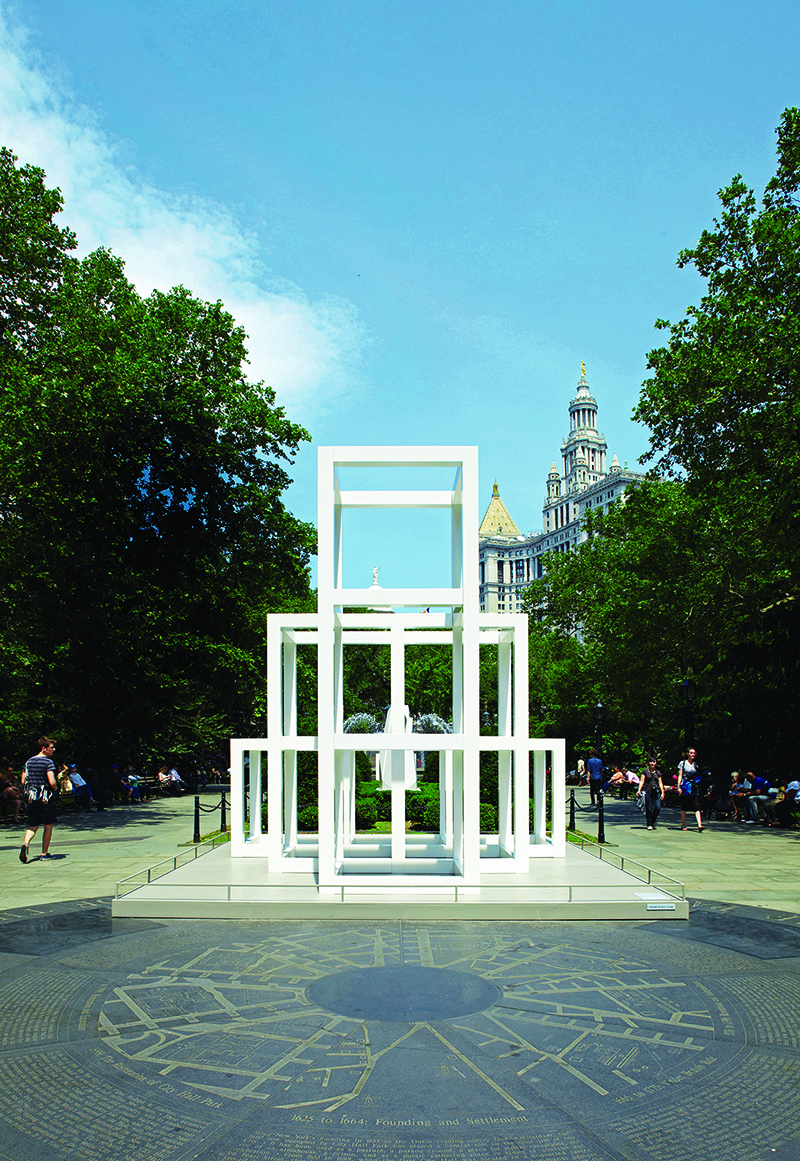Sol LeWitt Exhibit In NYC's City Hall Park
/The tulips have bloomed, the trees are green, and the sun is blazing! Yes New Yorkers, summer is here! And this summer, The Public Art Fund has turned our beloved City Hall Park into an outdoor museum exhibit featuring one of the world’s greatest modern artists, the late Sol LeWitt.
The park is storing a collection of LeWitt’s 27 most famous pieces of art throughout his career. It is the first outdoor exhibit detailing his extraordinary career. LeWitt was a leader in the Minimalism and Conceptualism movements, with specialized mediums ranging from photography, to works on paper to wall drawings, and 3-dimensional structures that explore different geometric forms such as pyramids and cubes. The selected pieces have been featured in museums around the world including London’s Tate Modern, Amsterdam’s Musée National d’Art Moderne, and Paris’ Centre Georges Pompidou. The Public Art Fund makes navigating the exhibition fun and easy with a free iPhone application that will walk you through the pieces and their meanings. In addition to the application, guests can call a phone number that provides an audio tour. If you’re itching for a walk in the park, now’s the time.
Splotch 15, 2005, Acrylic on Fiberglass: "The organic form and bright color of Splotch 15 create a remarkable contrast to Sol LeWitt’s iconic white modular structures. Nevertheless, the form and color distribution were generated through a typically LeWittian system of projections from a two-dimensional base. First, the artist drew a highly irregular, eccentric outline as the footprint of the structure. He then devised one segmented plan within that outline for color and a second plan for height. Using three-dimensional computer modeling software, his Brooklyn fabricator constructed the work. The resulting exuberant form is the surprising result of the marriage of these two systems of color and height." -Public Art Fund
Complex Forms, 1987, Painted Aluminum: "Sol LeWitt became interested in making irregular structures in the mid-1980s. For the Complex Forms, the artist drafted a two-dimensional polygon and placed dots at various locations within it. As the form is projected into three dimensions, those interior points are elevated into space at different heights. The elevated points dictate the seams of the object’s multi-faceted surface. The Complex Forms introduce irregularity into LeWitt’s structural vocabulary – an idea that is further explored, for example, in Splotch 15, 2005, in this exhibition." -Public Art Fund
Three x Four x Three, 1984, Painted Aluminum: "The large-scale open cubes of Three x Four x Three perform a simple numerical operation – the addition and subtraction of one element – while simultaneously altering their configuration. Three cubes connected on a horizontal axis and three cubes connected on a vertical axis frame four cubes each connected on two sides. This stepped, triangular form is further elaborated by Pyramid (Münster), 1987, in this exhibition." -Public Art Fund
Pyramid (Münster), 1987, Concrete Blocks: "In 1982, Sol LeWitt began to work with concrete blocks. As a common, readily available building material, it appealed to him as a modular component with which to build large-scale outdoor structures. Pyramid (Münster) was originally installed in a botanical garden for the Skulptur Projekte Münster, an important decennial exhibition in Germany. The artist first discussed this kind of form – horizontal steps of progressively decreasing width – in a 1966 article entitled “Ziggurats.” Different perspectives reveal the structure as a stepped pyramid or half-cube, suggesting the convergence of architecture and sculpture in LeWitt’s work." -Public Art Fund
